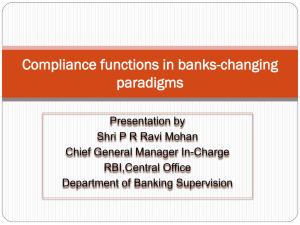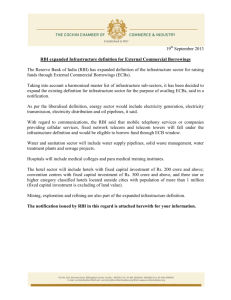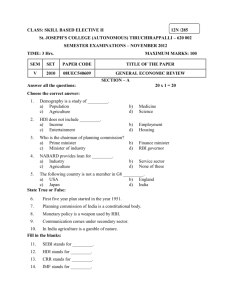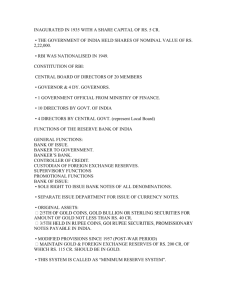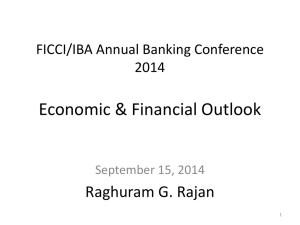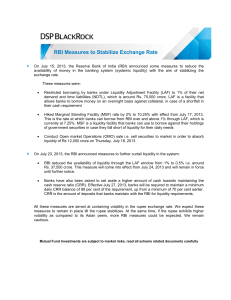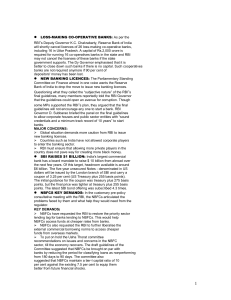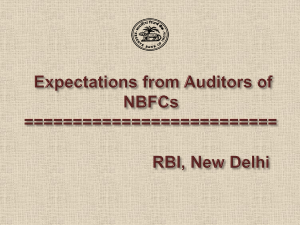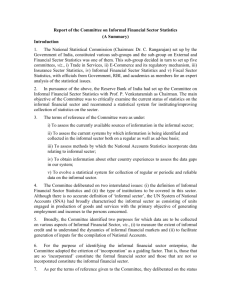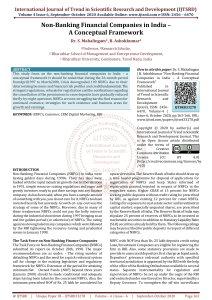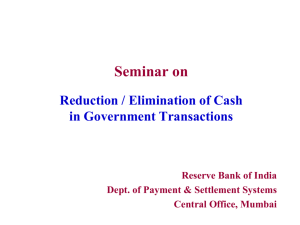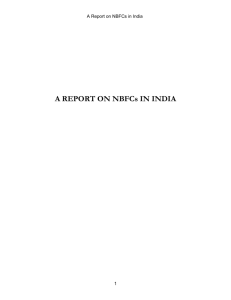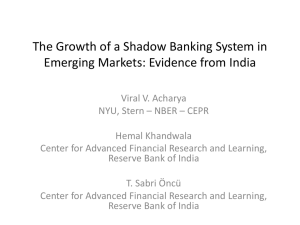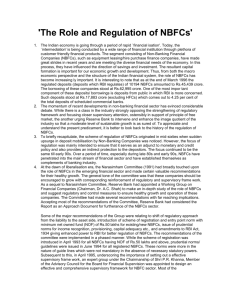licensing of new banks
advertisement
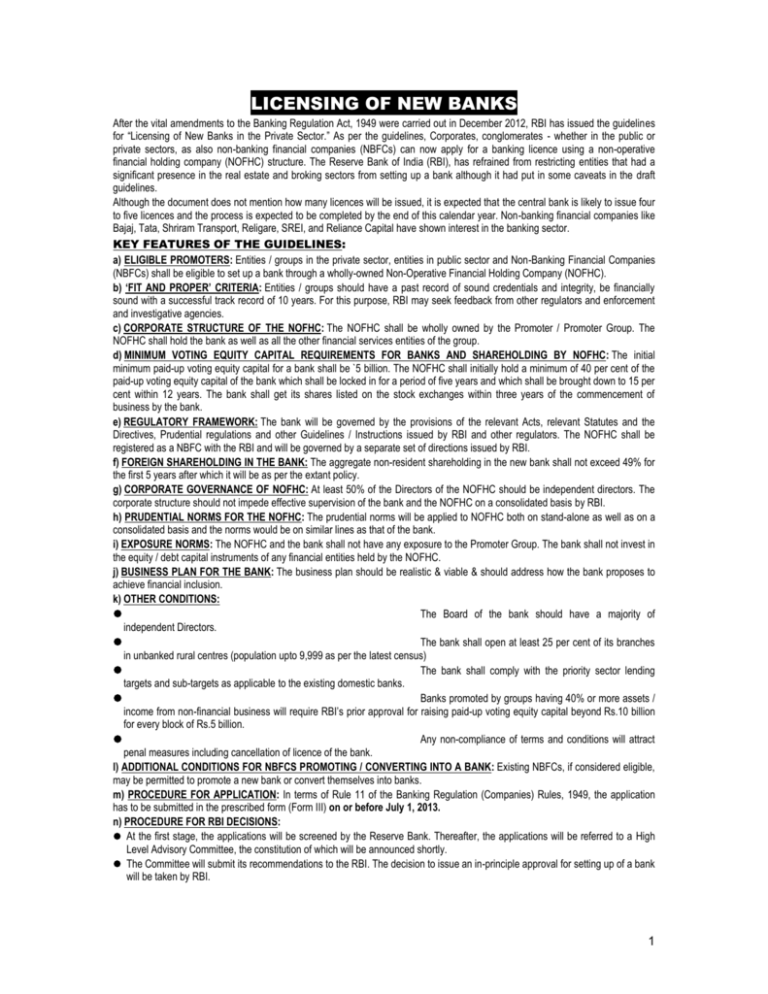
LICENSING OF NEW BANKS After the vital amendments to the Banking Regulation Act, 1949 were carried out in December 2012, RBI has issued the guidelines for “Licensing of New Banks in the Private Sector.” As per the guidelines, Corporates, conglomerates - whether in the public or private sectors, as also non-banking financial companies (NBFCs) can now apply for a banking licence using a non-operative financial holding company (NOFHC) structure. The Reserve Bank of India (RBI), has refrained from restricting entities that had a significant presence in the real estate and broking sectors from setting up a bank although it had put in some caveats in the draft guidelines. Although the document does not mention how many licences will be issued, it is expected that the central bank is likely to issue four to five licences and the process is expected to be completed by the end of this calendar year. Non-banking financial companies like Bajaj, Tata, Shriram Transport, Religare, SREI, and Reliance Capital have shown interest in the banking sector. KEY FEATURES OF THE GUIDELINES: a) ELIGIBLE PROMOTERS: Entities / groups in the private sector, entities in public sector and Non-Banking Financial Companies (NBFCs) shall be eligible to set up a bank through a wholly-owned Non-Operative Financial Holding Company (NOFHC). b) ‘FIT AND PROPER’ CRITERIA: Entities / groups should have a past record of sound credentials and integrity, be financially sound with a successful track record of 10 years. For this purpose, RBI may seek feedback from other regulators and enforcement and investigative agencies. c) CORPORATE STRUCTURE OF THE NOFHC: The NOFHC shall be wholly owned by the Promoter / Promoter Group. The NOFHC shall hold the bank as well as all the other financial services entities of the group. d) MINIMUM VOTING EQUITY CAPITAL REQUIREMENTS FOR BANKS AND SHAREHOLDING BY NOFHC: The initial minimum paid-up voting equity capital for a bank shall be `5 billion. The NOFHC shall initially hold a minimum of 40 per cent of the paid-up voting equity capital of the bank which shall be locked in for a period of five years and which shall be brought down to 15 per cent within 12 years. The bank shall get its shares listed on the stock exchanges within three years of the commencement of business by the bank. e) REGULATORY FRAMEWORK: The bank will be governed by the provisions of the relevant Acts, relevant Statutes and the Directives, Prudential regulations and other Guidelines / Instructions issued by RBI and other regulators. The NOFHC shall be registered as a NBFC with the RBI and will be governed by a separate set of directions issued by RBI. f) FOREIGN SHAREHOLDING IN THE BANK: The aggregate non-resident shareholding in the new bank shall not exceed 49% for the first 5 years after which it will be as per the extant policy. g) CORPORATE GOVERNANCE OF NOFHC: At least 50% of the Directors of the NOFHC should be independent directors. The corporate structure should not impede effective supervision of the bank and the NOFHC on a consolidated basis by RBI. h) PRUDENTIAL NORMS FOR THE NOFHC: The prudential norms will be applied to NOFHC both on stand-alone as well as on a consolidated basis and the norms would be on similar lines as that of the bank. i) EXPOSURE NORMS: The NOFHC and the bank shall not have any exposure to the Promoter Group. The bank shall not invest in the equity / debt capital instruments of any financial entities held by the NOFHC. j) BUSINESS PLAN FOR THE BANK: The business plan should be realistic & viable & should address how the bank proposes to achieve financial inclusion. k) OTHER CONDITIONS: The Board of the bank should have a majority of independent Directors. The bank shall open at least 25 per cent of its branches in unbanked rural centres (population upto 9,999 as per the latest census) The bank shall comply with the priority sector lending targets and sub-targets as applicable to the existing domestic banks. Banks promoted by groups having 40% or more assets / income from non-financial business will require RBI’s prior approval for raising paid-up voting equity capital beyond Rs.10 billion for every block of Rs.5 billion. Any non-compliance of terms and conditions will attract penal measures including cancellation of licence of the bank. l) ADDITIONAL CONDITIONS FOR NBFCS PROMOTING / CONVERTING INTO A BANK: Existing NBFCs, if considered eligible, may be permitted to promote a new bank or convert themselves into banks. m) PROCEDURE FOR APPLICATION: In terms of Rule 11 of the Banking Regulation (Companies) Rules, 1949, the application has to be submitted in the prescribed form (Form III) on or before July 1, 2013. n) PROCEDURE FOR RBI DECISIONS: At the first stage, the applications will be screened by the Reserve Bank. Thereafter, the applications will be referred to a High Level Advisory Committee, the constitution of which will be announced shortly. The Committee will submit its recommendations to the RBI. The decision to issue an in-principle approval for setting up of a bank will be taken by RBI. 1 The validity of the in-principle approval issued by the Reserve Bank will be one year. In order to ensure transparency, the names of the applicants will be placed on the RBI website after the last date of receipt of applications. INFRASTRUCTURE DEBT FUND (IDF): The first Infrastructure Debt Fund (IDF) of the country promoted jointly by IL&FS group and Life Insurance Corp of India has been launched. The objective of the fund is to promote the infrastructure sector in the country. It would bring down the cost of infrastructure financing over a long period. Apart from IL&FS, IIFCL and SREI Infra have also got the registration from the Securities and Exchange Board of India (SEBI) to start IDFs. ICICI Bank is also starting a non-banking finance company IDF. The role of IDF is different, as they provide long term finance. Hamon Investment Group from Hong Kong has invested $ 100 million in this IDF. The IDF is targeting $ 1 billon of investment. (Contd. from Economic Survey ……..Page 10) Jobs: The survey has a special chapter focusing on jobs. The future holds promise for India provided the Govt. can seize the "demographic dividend" as nearly half the additions to the Indian labour force over the period 2011-30 will be in the age group 30-49. India is creating jobs in industry but mainly in low productivity construction and not enough formal jobs in manufacturing, which typically are higher productivity. The high productivity service sector is also not creating enough jobs. As the number of people looking for jobs rises, both because of the population dividend and because share of agriculture shrinks, these vulnerabilities will become important. Because good jobs are both the pathway to growth as well as the best form of inclusion, India has to think of ways of enabling their creation. The country will have to invest in education, health and initiate labour reforms to ensure that India’s demographic dividend doesn’t become demographic curse. India needs support from developed nations to tackle Climate change. Financial Sector Reform: On financial sector reform, the survey takes note of the high level of gross NPAs of the banking sector which increased from 2.36% of the total credit advanced in March 2011 to 3.57% of total credit advanced in Sept. 2012. The survey suggests that revival of growth will help contain NPAs, but more attention will have to be paid to whether projects are adequately capitalized up front given the risks. Social Services: Expenditure on social services also increased considerably in the 12th Plan, with the education sector accounting for the largest share, followed by health. In the 11th Plan period nearly 7 lakh crore rupees has been spent on 15 major flagship programmes. A number of legislative steps have also been taken to secure the rights of people, like RTI, MGNREGA, the Forest Rights Act, and the Right to Education. Direct Benefit Transfer (DBT): DBT with the help of the Unique Identification Number (Aadhaar) can help plug some of these leakages. With the 12th Plan's focus on 'environmental sustainability', India is on the right track. However, the challenge for India is to make the key drivers and enablers of growth-be it infrastructure, the transportation sector, housing, or sustainable agriculture-grow sustainably. 2 3

